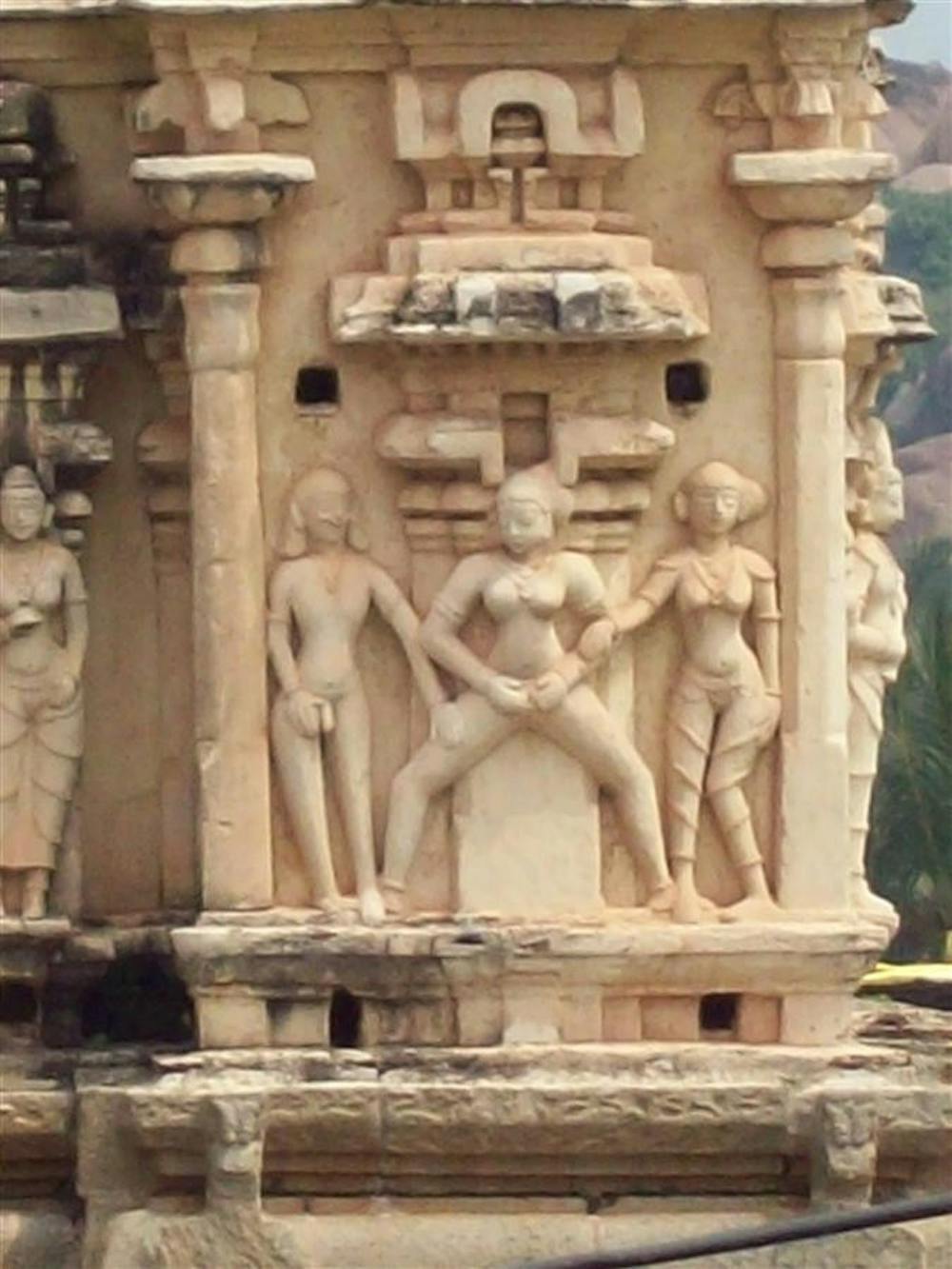I had a tour guide in Hampi who thought everything was fabulous. She thought ruins were fabulous. She thought landscapes were fabulous. And she absolutely thought temples were fabulous.
So I wasn’t surprised when she said, “Oh, and look at these fabulous carvings at the top of this temple.” But then she said, “There’s a fabulous one of a woman exposing herself.”
This caught my attention. I knew many older temples have carvings from the “Kama Sutra,” but something like this seemed absurd, given the conservative nature of much of Hinduism.
I looked closer and there was indeed a stone woman exposing herself at the top of the largest active temple in Hampi.
The fact is that American culture will throw sex around as a subject until it comes to religion. Coming from a culture where immaculate conception is the only kind mentioned in churches makes for a shock when compared to India.
This is likely because of the stark contrast between the conservative daily lives of much of India and the blatantly sexual designs in the older temples.
For the first few months I was here, I noticed that South Indian culture is much more conservative on this subject than American culture.
Films here tend to not have kissing, arranged marriages are prevalent and the only people I’ve seen holding hands have been groups comprised of a single gender.
However, there’s a silent liberalism and even exposure of gender, sex and identity within India.
Many Indian people have suggested to me that British colonization imposed Victorian morals, whereas traditional Indian culture allowed for more liberal takes on now-sensitive subjects such as sex, gender, dress and what people do with their bodies.
While the temple carvings are interesting, the way the people talk about this sensitive subject invites inquiry into Indian history wherein the traditional seems to be more like what modern Americans are striving for: places for third gender, equality in sexual relations and greater education.
That is to say that even though much of India seems conservative, there are specific pockets and systems in place to both protect individual rights and promote sexual education.
For example, while it seems homosexuality has yet to be accepted within mainstream society, there is definitely a place for third gender within certain sects of Hinduism, which has traditionally protected homosexuality alongside third-gendered and intersex individuals.
There are men, women and intersex individuals called “Hijras.” They are followers of Shiva who have devotion to their god in the same way women have been devoted to him in traditional Hindu teachings.
Even though the Hijras are sometimes frowned upon by conservative members of society, there is a number of activist groups promoting protection for individual rights while encouraging a type of “Kama Sutra” rebirth and sexual revolution for the general society.
All of the clashing beliefs in India make for seemingly infinite opinions about temple art, taboos and Tantra. I think the world gives India too much heat for being conservative and not enough credit for its more liberal aspects.
The ‘Kama Sutra’ side of India

Get stories like this in your inbox
Subscribe



